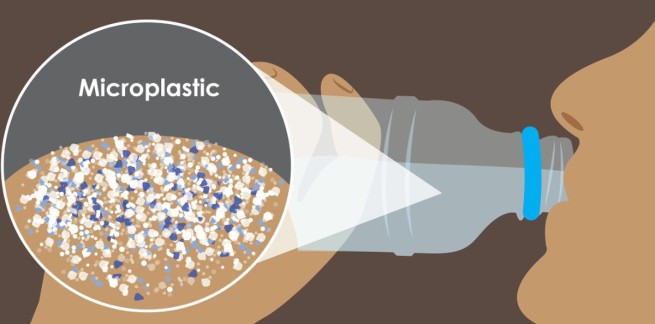From oceans, fields and landfills to the air we breathe, long-lasting chemicals released by plastic products are now all around us.
The consequences for the planet are already obvious, but what about human health, and how can the dominance of plastic in nature affect the body? Experts from the University of California (UC) in San Francisco answer this question.
“While we know that plastic is almost everywhere, the reality is there is not much research on how it affects human health” notes Dr. Tracy Woodruff, a professor of obstetrics and gynecology at the University of California, San Francisco. After carefully examining these effects through scientific studies, but conducted on animals, she and her team at the University of California's Program in Reproductive Health and the Environment published a report concluding that Exposure to plastic appears to reduce fertility and increase the risk of cancer. They also noted links to metabolic, respiratory and digestive disorders.
In particular, the research has focused on microplastics — particles smaller than 5 millimeters in size that are actually almost invisible, but are found everywhere: in dishes, clothes, household items, and a million other things and objects. The problem is that they penetrate into food, water, lungs, skin, blood, brain and placenta.
Scientists are still trying to figure it out chain linking plastic exposure to cancerbut they did identify several key findings: When the immune system detects the presence of microplastics, it responds with inflammation – the body's response to anything the body recognizes as foreign. Besides Some chemicals in plastics appear to block enzymes that the body produces to prevent cell damage and the effects of oxidation. Oxidative stress and chronic inflammation have long been linked to cancer.
Microplastics also disrupt the endocrine systemwhich regulates hundreds of bodily functions, from mood to sleep to metabolism. Hormones are literally the key to these functions, as they are tiny molecules that circulate in the blood until they bind to a receptor that matches their specific shape, like a key that fits a lock.
Many plastics contain a chemical called bisphenol-A, or BPA. BPA molecules look and act similar to estrogenso they can penetrate the receptors. It's a process similar to using the wrong key in a lock. BPA prevents real estrogen from binding to these receptors, so the hormone can't function properly.As a result, Dr. Woodroof points to studies linking BPA Linked to Endometriosis, Infertility, Asthma, Obesity, and Fetal Neurodevelopmental Disorders.
Other chemicals in plastic cause problems before the hormones even get into the bloodstream. For example phthalatesa class of chemicals that manufacturers add to hard plastics to give them some flexibility, interfere with the body's production of the hormone testosterone. Interrupting the flow testosterone In male fetuses, phthalates may affect sexual development throughout life.
While these findings are alarming, Dr. Woodruff notes that population-scale studies do not necessarily lead to noticeable changes in the health of most people.







More Stories
Caution: Plague detected in arthropods
Medicines and vitamins that should not be taken with dairy products
Coffee: How the Number of Cups We Drink Affects Us